If there is a state that should not be missed when visiting Mexico, it is Oaxaca! Oaxaca is a concentrate of Mexico in one state. Here we eat well, we drink well, we enjoy the charm of the capital and the surrounding area, we appreciate the beauty of the mountains and we go sunbathing on the beaches! Let’s make a small tour in this peaceful corner of southern Mexico.
Oaxaca de Juarez
Oaxaca is a nice city, a very nice one. Neither too small nor too big, with a strong colonial style, walking in its streets is a real pleasure. In the markets Benito Juarez and especially the Mercado 20 de Noviembre, tamales, the memelas and the tlayudas win the gold medal of taste, a real delight!

We find other dishes but also very good juices, pan de yema, and of course chocolate and quesillo, the prides of Oaxaca.
In the afternoon, it is on the side of Zócalo Square that you should be. After passing through the Nuestra Señora de la Asunción Cathedral and Templo Santo Domingo, sitting on a terrace with a good coffee while contemplating life in this great square was a real pleasure. Sellers of inflatable balloons, handicrafts, elotes (cooked corn served with cheese and mayonnaise) and other shoe polishers give the tempo in the place already well animated by the cafes and shops delimiting the Zócalo.
And on Wednesdays in Oaxaca, it’s dancing Wednesday!
From 6 pm, some music bands occupy the place and vary the rhythms and melodies, attracting locals and tourists, from the youngest to the oldest, and opportunity to invite a granny or a grandpa to share a salsa or two! 😀
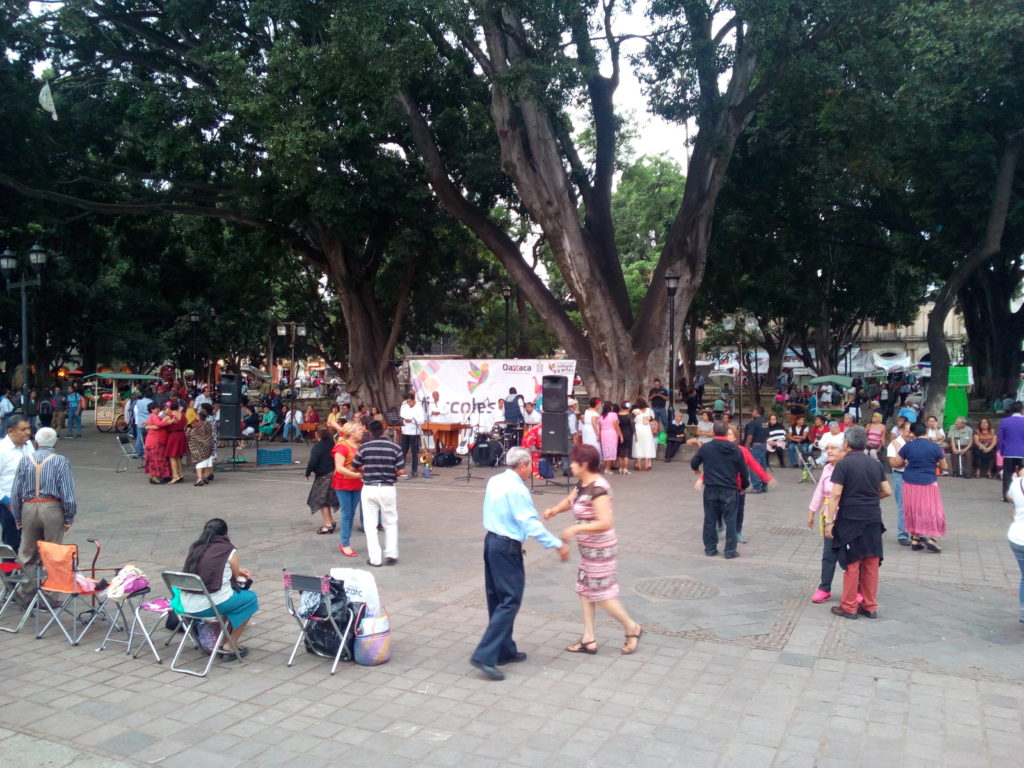
To visit the surroundings of Oaxaca, it is possible to take a tour with an agency and/or rent a car.
Excursion Hierve el Agua
I had the opportunity to do both, with a first day bus (10h-19h) really practical because cheap and with a nice guide that informed the different points visited.
The tour began in Santa María del Tule, to appreciate the “Ahuehuete”, a tree with the name of Zapotec origin and that means “old of the water” (viejo del agua).
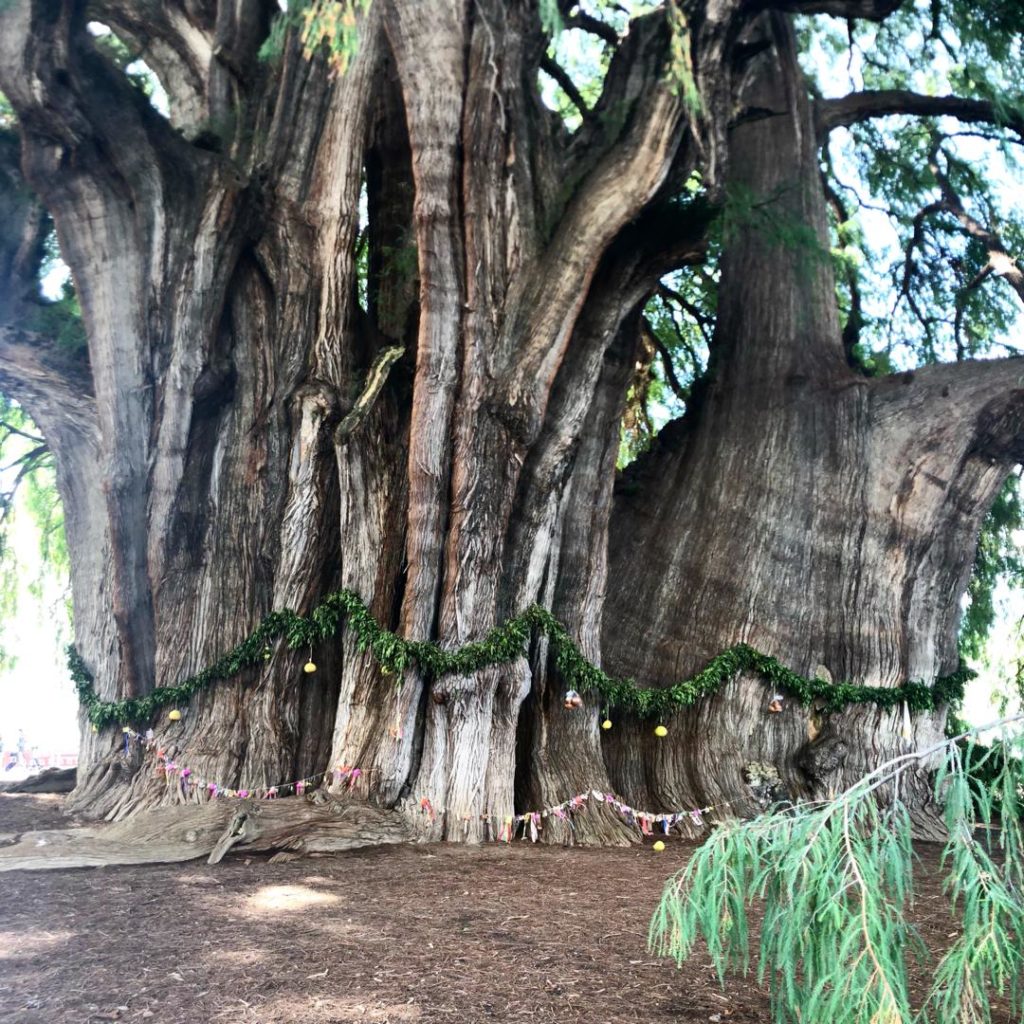
With 36 meters in circumference (41 meters high), this tree from the family of Taxodio Micronato has the thickest trunk of all known trees and can shelter up to 30 people under its shade!
It is also called tree of eternity (because its age is estimated at 2,000 years) but also tree of life because on some sides we can see the silhouette of some animals (crocodile, lion, elephant).
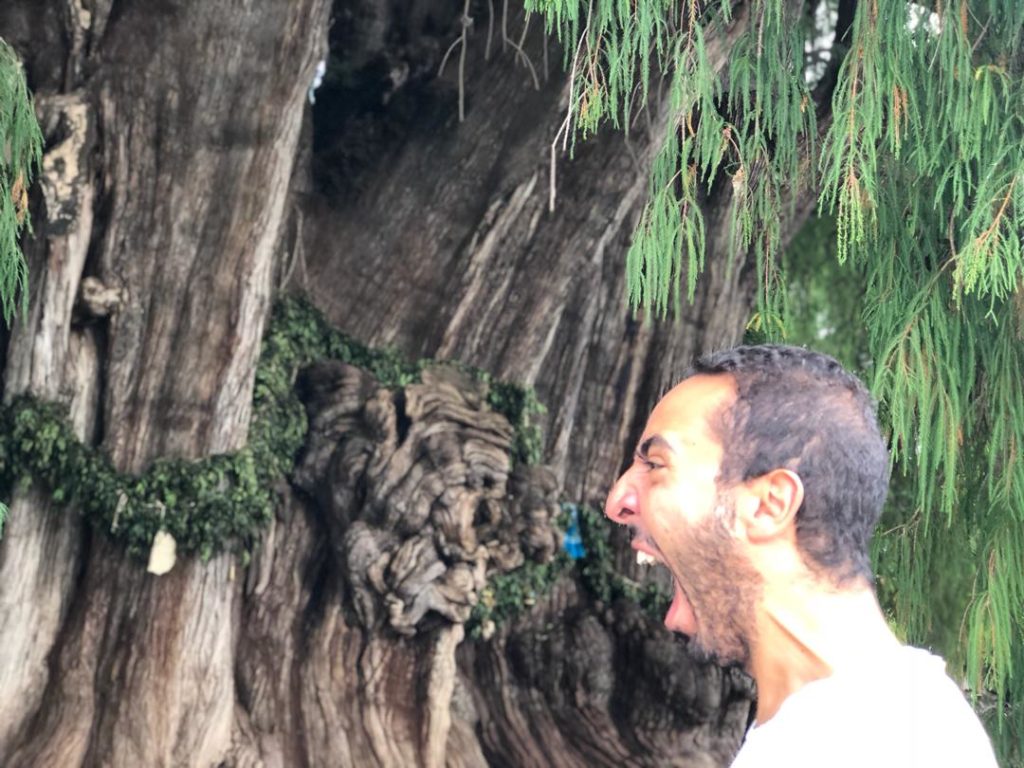
The tree is visible from the street but it is possible to pay $ 10 to see it more closely.
We then left for Teotitlan del valle, a region known for its textile and woolen handicraft activity. We had the opportunity to visit a craft house, where the owner explained the process of making, coloring, and weaving wool.
What is interesting is that all products used, from wool to different dyes and soap come from natural sources (fruits, roots, leaves and mushrooms …).
The different weavings proposed embrace classic geometric shapes or more elaborate forms from more precise motifs or works of art.
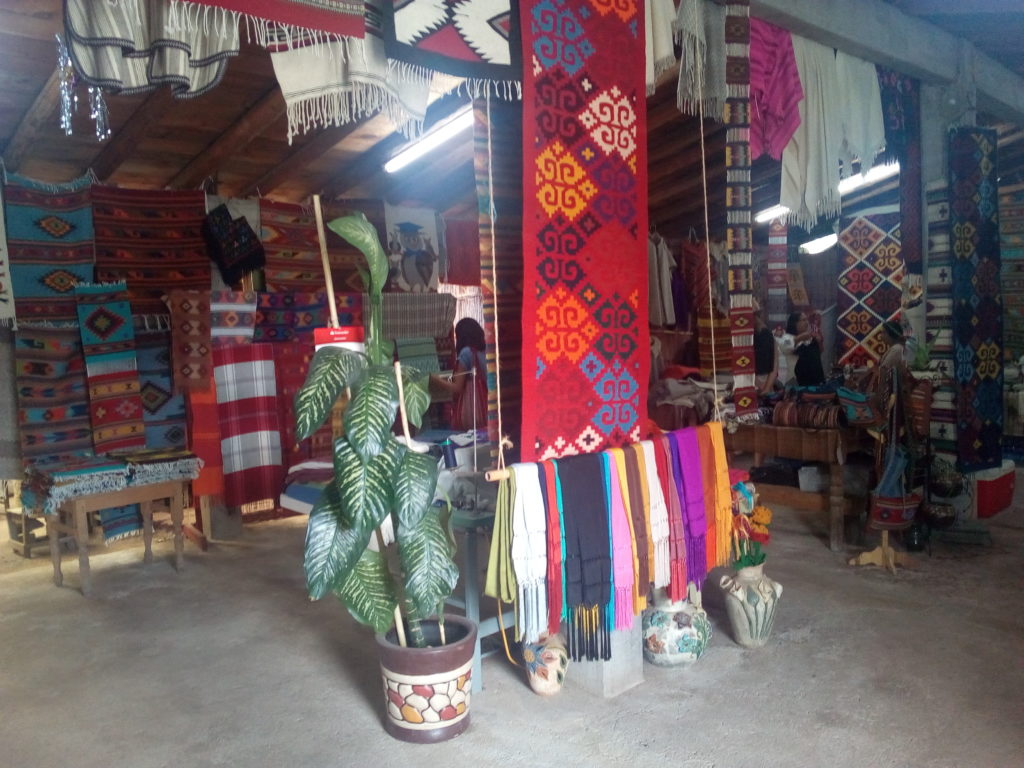
After this colorful visit, the weather conditions changed the course of the day and the next stop was a visit to a mezcalery, Don Agave.
We discovered the different types of Maguey (or Agave), the plant at the base of these delights! Then we had a detailed explanation of the production process of mezcal from culture to bottling.
Once we have integrated this, we went to tasting, and it would have been better to have a full stomach before starting the session! Indeed, it is not less than 10 samples that follow each other in our glasses to release their flavor in our mouths!
From wild or culture magueys, young or rested in barrels (from 3 months to 3 years), raw or prepared with plant extracts, tastes and intensities varied but lead to the same result: everyone finishes with the smile on the lips!
And what better than a tipsy public to start to offer the products of the house and talk money!
Depending on the size and alcohol content, prices range from 180 pesos (€ 8) to 1800 pesos (€ 80), an opportunity to buy a small bottle to please a Couchsuring host or anticipate Christmas gifts.
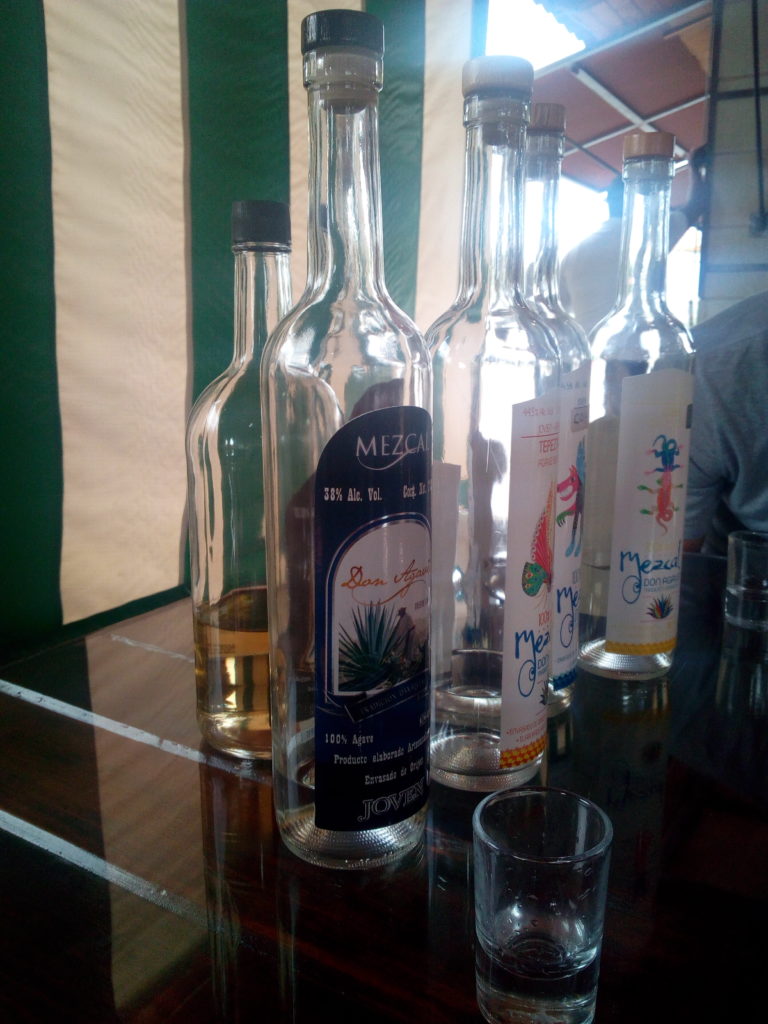
From there we went to see the archaeological site of Mitla, where the conquistadors have (as often) destroyed on their arrival the existing buildings to recover stones used for the construction of the Church San Pablo de Milta.
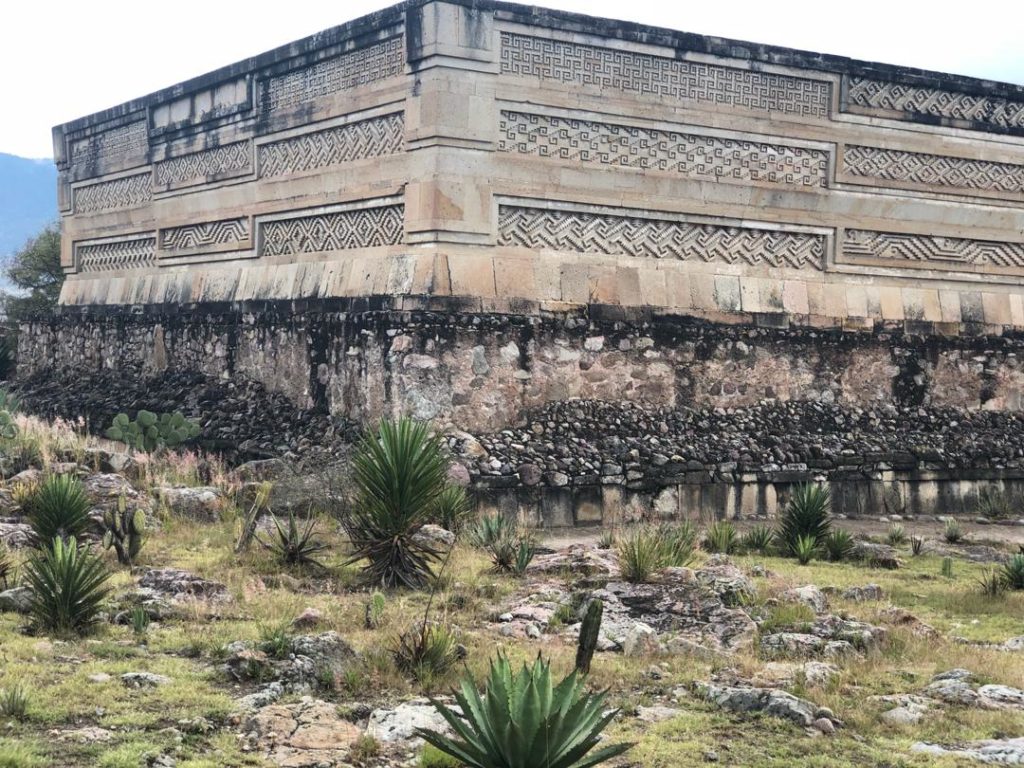
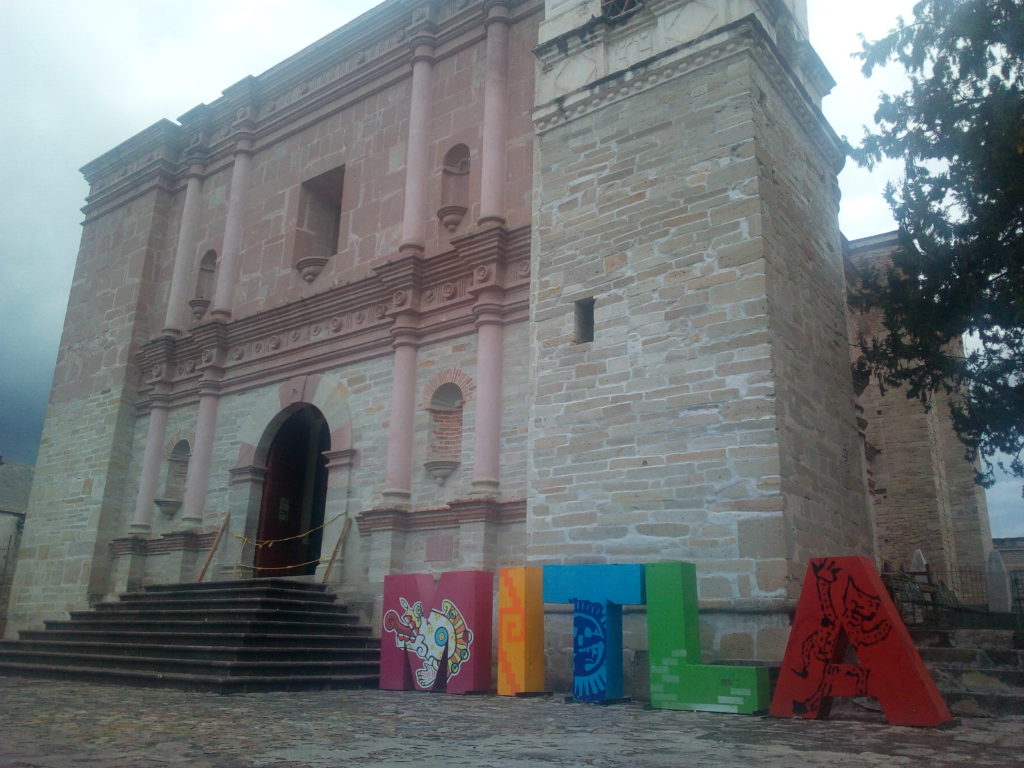
As the weather has become more lenient, we ended the day with the visit of Hierve el Agua, the flagship spot of the excursion. Here, we came to observe beautiful petrified waterfalls. The scenery is splendid, you have a view of the mountains all around, and you can swim in one of the two natural pools, enjoying the (almost) totality of the view!
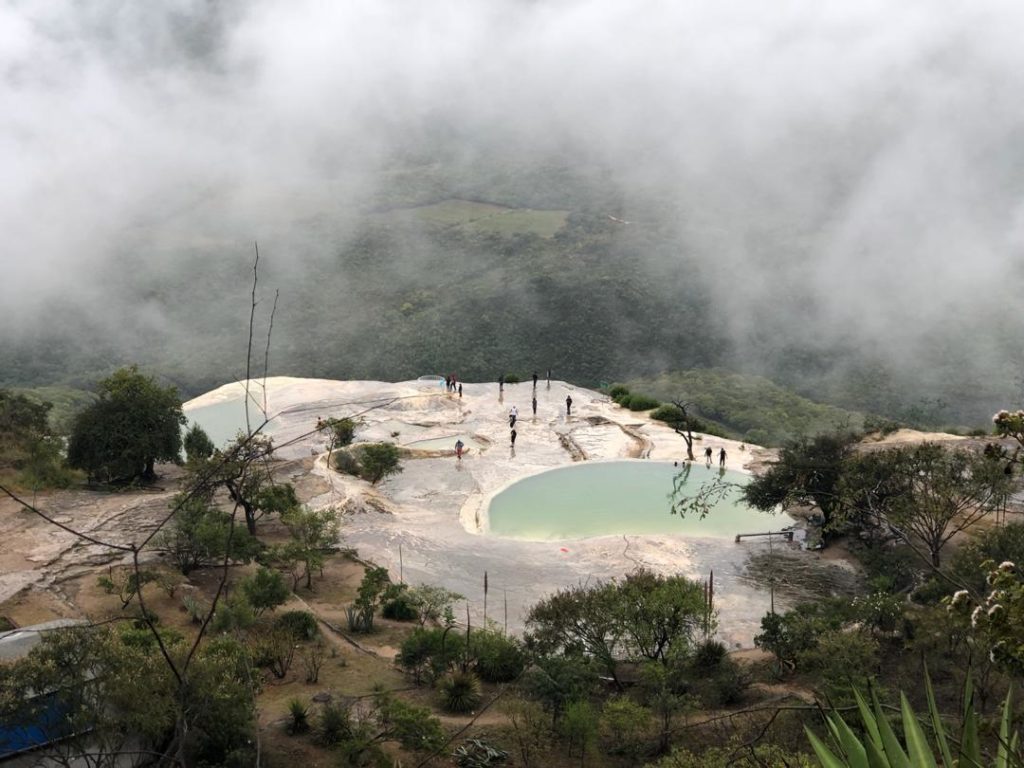
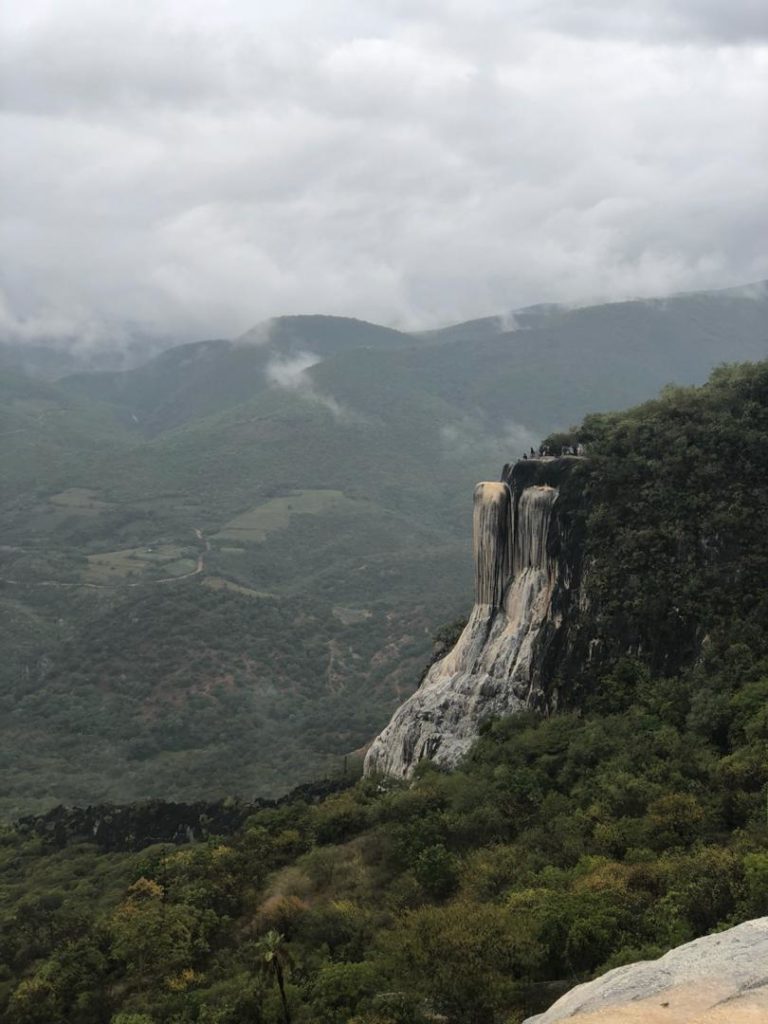
This full tour had cost 150 pesos (7 €) for the transport and the guide, to which are added entrance fees of 10 pesos to Tule, 50 pesos for Hierve el agua, and 70 pesos for Mitlan. Food is not included, but the day includes a lunch break in which you can eat your food or have lunch at a local restaurant (for around 170 pesos).
Other sites around Oaxaca
The day after the excursion, we rented a car with other travelers to have more time and flexibility, and we took the direction of Monte Alban. This site was the capital of the Zapotecs, the inhabitants of the region before the arrival of the Spaniards. And to be able to extend their city situated in altitude, the Zapotecs had the idea to smooth the summit of a mountain!!!
This site has been used for more than 1,500 years, but still hides many mysteries, and despite the guided tour (500 pesos per group), we left with more questions than answers!

Then we went to San Martin Tilcajete, a region known for its Alebrijes, these wooden statuettes painted in a thousand colors! We randomly stopped at the manufacture Una inspiración de mi vida, and Sebastian welcomed us with a long presentation of the history of Alebrijes and their production in the family manufacture since already 3 generations!
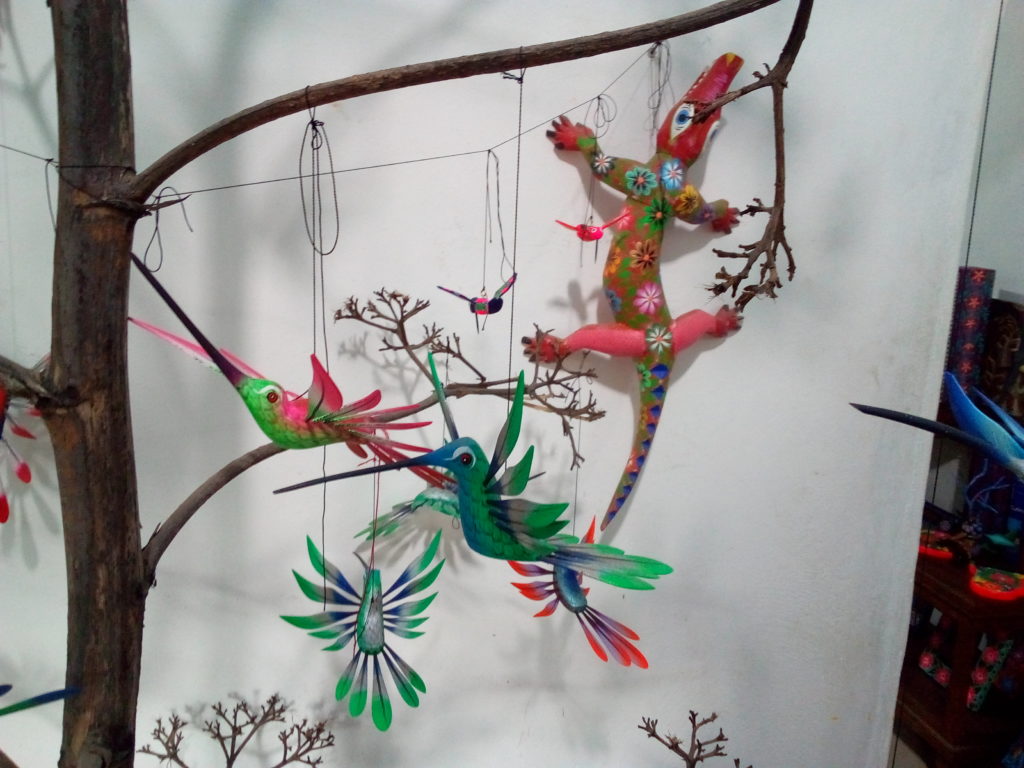
Due to the bad weather we could not visit more during the day (due to roadblocks!), But we would have liked to visit the colonial village of Ciolapam de Guerrero and especially San Bartolo Coyotepec and its black wooden craftsmanship, but it will be for next time!
Pura Vida!
To find all my articles related to Mexico, follow this link.
